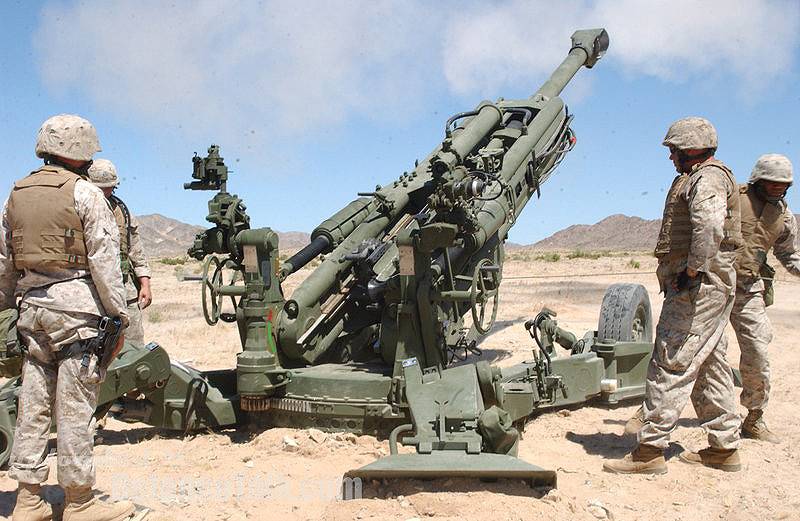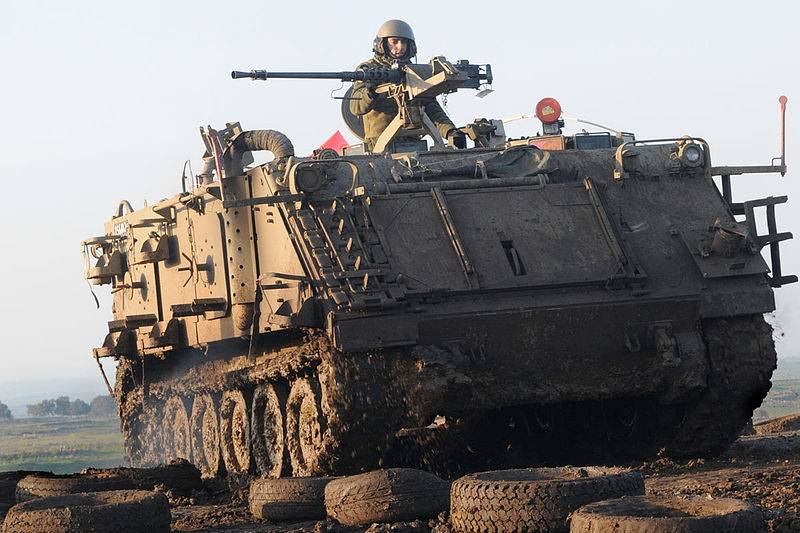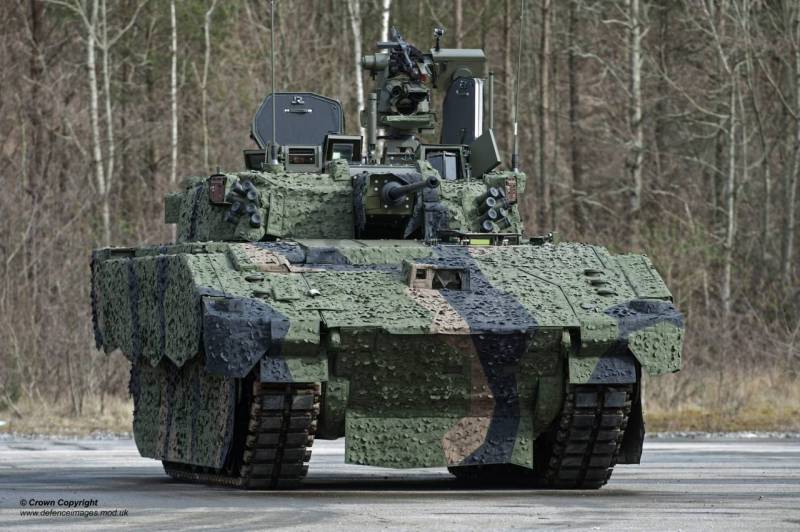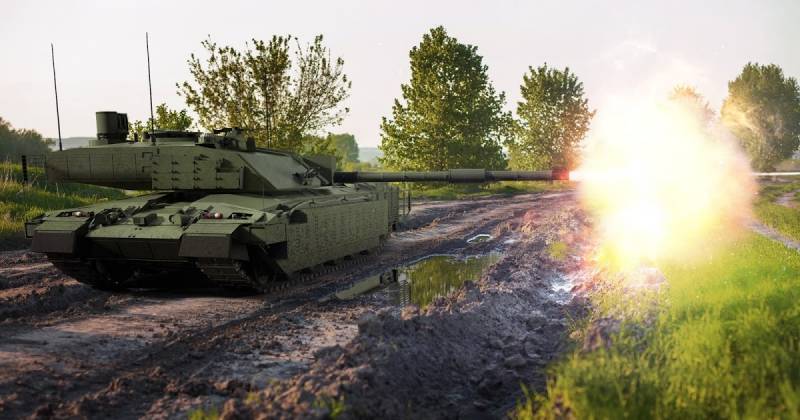Easier to prevent than to cure: concepts of maintenance and repair of military equipment
The M113 family of tracked armored personnel carriers of the US Army is being upgraded as part of a program led by BAE Systems, which will also add new features to these vehicles.
The market for the maintenance of military vehicles in transition. The model, which appeared over ten years ago with the start of military operations in the Middle East, was focused on maintaining the fleet of vehicles that were often purchased under urgent operational needs programs.
For the United States and its allies, which deployed their cars in Afghanistan and Iraq, the most urgent levels of the so-called MRO cycle (maintenance, repair, overhaul) became priority: maintenance, daily training, replacement service, and minimal repairs and modifications. Meanwhile, the maintenance of higher levels, such as restoration, special modifications, major upgrades, overhaul of different levels, was postponed, often until the cars returned from business trips.
Battle Damage
Such a state of affairs could not but affect the state of the technology of coalition forces led by the United States. After the withdrawal of troops and weapons from Afghanistan and Iraq, starting around 2011, the Americans and their allies turned their attention to the restoration and overhaul of the vehicles that were deployed during all of these campaigns. Machines that were acquired under various urgent operational requirements, for example, Mastiff, Ridgeback and Wolfhound MRAP (Mine-Resistant Ambush Protected categories - with increased protection from mines and improvised explosive devices), vehicles that were acquired by the British Army to facilitate its the deployment in Afghanistan, or those that were upgraded throughout all these operations to different levels, also needed to be brought to a common standard. For example, BAE Systems began a three-year program (from 2012 to 2014) to restore the M2 Bradley tracked combat vehicles for the US Army. The company was tasked with partially disassembling, repairing and inspecting each machine for the restoration of capabilities and the extension of its service life. During the second-level repair process carried out at the Red River Army Depot in Texas and the BAE Systems subsidiaries in the United States, the main components were removed for inspection and then returned to these factories for refinement and testing. As part of this initiative, L-3 Communications was awarded a contract to refine the transmissions of the M2 Bradley machines.
Meanwhile, in February 2010, the US Army issued a contract to BAE Systems costing 32 a million dollars to modify the remaining 417 tracked M113 tracked production from United Defense / BAE Systems. In the company BAE Systems stated that these works will include the replacement of old and damaged components and the restoration of machines to "pre-combat status." The issuance of this contract was followed by the receipt of a contract from the US Army in 2008 for the performance of similar work on the restoration of the 1074 M113 machines. The US Army took the opportunity to refine the M113 machines in order to equip these machines with new additional armor and equipment to protect against weapons mass destruction. In addition to the contracts for the M113 armored personnel carriers, BAE Systems has also received contracts for the restoration of the M-777 towed howitzers of the American army, having concluded a cooperation agreement with the Anniston arsenal in this connection. According to the official statement of the army, this modernization work includes the revision of the recoil and hydraulic systems.
The process of restoring equipment is not closed only by BAE Systems. For example, Textron received the task of upgrading the M-1117 Guardian Armored Security Vehicle armored personnel carriers operated by the military police in order to repair the damage sustained in combat. At the same time, the army should have had the opportunity in the future to refine these machines in the area of survivability, safety and mobility. The initial 4 million-dollar contract to upgrade the first six cars was issued to Textron as part of a pilot program. The next contract was issued in 2008 on 12 machines. The next contract from the US Army costing 20 millions of dollars to upgrade 392 machines with two options to upgrade another 225 machines the company received in October 2011 of the year.

Also, a major program is being implemented to upgrade the M-777 howitzers in service with the American army. In accordance with it, the recoil mechanisms and hydraulic systems will be improved.
New target
Not only the Americans, but also their allies from different countries carry out similar work on restoration and modernization. Many armies are currently thinking about what car parks will look like in the coming decade and how they will be serviced. This could include finding the right proportion of staff and contract specialists performing repair and maintenance work, considering new most profitable models for servicing equipment and weapons, as well as developing MRO technological processes that will be able to fully ensure combat operations in the coming decades with the participation of the Western military.
Arguing about how military equipment parks will be serviced, one should first of all take into account what the future military campaigns will look like. In the UK, defense industry experts, such as former director of the London Royal United Institute for Defense Studies, Professor Michael Clark, use the term “strategic raid” to describe short, fast, vigorous operations that the British government can focus on in the future instead of long, protracted, ongoing operations. lately in the Middle East.
This model, perhaps, has already begun to apply to those types of machines in which the British Ministry of Defense is investing. These are mostly functionally flexible, highly mobile vehicles that are easier to service in the field, as opposed to heavy tracked vehicles with complex logistical requirements. In this regard, a typical example is a promising family of tracked Ajax combat vehicles, which, according to the Department of Defense, from the 2017 until the end of the 2019, 589 units will be supplied in several variants to the British army. The General Dynamics Ajax variants are distinguished by a high level of uniformity, reducing the volume of service and logistics in operation. Such purchases also entail a change in the allocation of material resources by the Ministry of Defense.
In January 2015, the Ministry of Defense issued Babcock International a ten-year contract worth $ 1 billion to service British Army ground vehicles. As part of this contract, Babcock 170 has allocated millions of dollars to the Ministry of Defense for the maintenance and repair of the ground forces and the royal air forces, as part of this contract, maintenance, repair and storage of vehicles of the British Army ". According to this press release, Babcock will be responsible for servicing, running repairs, overhauling and fleet management, as well as storing vehicles and light weapons in order to maintain machine availability.
It is expected that the transfer of the services performed by the DSG to a private company will make it possible to save considerable funds over the entire term of the contract (estimated at about 606,8 million dollars), make more rational use of the available financial resources, and also allow the Defense Ministry to concentrate resources on the operation rather than on the material and technical provision of The Department of Defense added that the DSG ground systems unit personnel was transferred to Babcock, and for several years this company has been implementing a program to improve and optimize the business potential, giving the DSG group the opportunity to maintain heavy machines for other operators that it was impossible to implement in as a structural unit of the Ministry of Defense. According to the Ministry of Defense, Babcock is already working to identify commercial opportunities for DSG in the Babcock group.
The company Babcock reported that approximately 30 percent of the entire military equipment fleet of the Ministry of Defense is serviced by the company, including the so-called “white” fleet in the number of 14000 units, including, for example, buses, cranes, and armored platforms. They also noted that the logistics model is based on maintaining operational availability and operability of equipment, ensuring procurement and renting equipment, as well as providing various services, including maintenance, repair, repair assistance and troubleshooting. As part of the C-Vehicle initiative (Construction Vehicle - engineering and construction equipment), Babcock and Amey have set up a joint venture called ALC. Under the terms of this program, ALC provides the Department of Defense with building and loading equipment, which is used by an engineering corps and a logistics corps, which are an integral part of the British army. Under a contract worth 728,6 million dollars, which will last until 2020, the existing C-Vehicle fleet of approximately 4000 platforms (with the exception of some specialized military equipment), previously owned by the Ministry of Defense, was purchased by ALC and will be replaced by significantly smaller (approximately 2100 units ) fleet of civil origin.
Under the terms of this contract, ALC is responsible for ensuring the optimal use of the park, providing comprehensive data on the availability of equipment through the park information management system, which is an integral part of the defense information infrastructure. In addition, it provides training, technical documentation and commercial equipment in order to optimize the maintenance of the park, the supply of spare parts and the management of material and technical resources. Such a contract to ensure the operational availability of equipment provides enormous advantages to the customer, since it takes maintenance and repair work from the Ministry of Defense and at the same time guarantees that it will have access to the machines at any time for minimal money.
From the outset, the promising Ajax family of vehicles from the very beginning was created with a view to a high level of uniformity in all variants in order to reduce the logistic load and service volume in the operating conditions.
Growing market
The integration of innovation and know-how in the private sector with core, day-to-day military activities allows defense ministries and departments to more accurately monitor how efficiently the services are provided and shift the responsibility for the provision of services to the industry, the volume of which can be measured in order to maximize profitability and channel resources to where you need them most. This shift towards a contract industry that can meet logistics needs also contributes to a significant growth in the global market for servicing and repairing armored vehicles. In its study, London-based SDI (Strategic Defense Intelligence) made a forecast that the market, estimated at $ 2016 billion in 22,5, will grow to 2026 billion by 32,4. The SDI expects that within this market the segment of infantry fighting vehicles will occupy the largest share of 32,2 percent, the main combat Tanks 25,8 percent and armored personnel carriers 17,4 percent. According to the authors, the growth is determined by the needs of international conflicts and rebels and programs for the purchase of vehicles and modernization implemented by the armed forces of many countries of the world.
Industry is developing new innovative ways to achieve alertness. One of the areas of development is the use of virtual reality headsets and glasses like Google Glass, which can give technicians a kind of x-ray image needed for maintenance and repair. These systems work by overlaying computer graphics and diagrams on the wearer's natural field of view in order to show which components need attention, how they can be assessed, replaced, or repaired. Several companies, including NGRAIN, Fieldbit and Accenture, have developed similar smart glasses systems in order to use computer-aided design to simplify logistics and service processes in the industrial sector. Organizations such as, for example, the United States Department of Defense United States Department of Advanced Studies (DARPA), have shown genuine interest in the use of this technology in the military sphere.
For example, researchers from the Purdue University System Integration Center, in conjunction with Honeywell and the US Army, developed a “diagnostic bar” - a speed bump system with built-in sensors that allows the military vehicle to detect damage to the main suspension elements. The idea is to help operators save time and maintenance costs by identifying defects before they cause the machine to fail at the most inopportune moment.
Complexes for monitoring the status and use of systems
At the Eurosatory 2016 defense exhibition in Paris, Thales and Soframe presented a new service product for optimizing fleet management of military vehicles called MILFLEET. The set of fleet management services offered by MILFLEET is based on the concepts of proactive maintenance, which has become possible due to the high levels of digitization of the latest generation of military vehicles. This service ensures that the right machines are always available in the right place, at the right time, and in the best configuration for the customer. The platform-independent MILFLEET system ensures the optimal organization of the fleet logistics with specialized management, as well as the maintenance of systems and equipment in order to precisely meet the needs of each customer. The HUMS (Health and Usage Monitoring System) system for monitoring and using the system collects data from sensors embedded in the machine in order to be able to carry out preventive maintenance, identify and eliminate possible malfunctions before they occur.
HUMS has become the primary means of efficient maintenance and repair for platforms deployed on the battlefield, with more and more platforms of a new generation with high digitization levels receiving monitoring capabilities built into the initial design stages.
Platforms of the British Army, for example, the main battle tank FV-4034 Challenger-II of BAE Systems, will undoubtedly benefit from new maintenance and repair agreements that the British Department of Defense has concluded with private companies
In addition to recording the status and operation of mobile platforms, sensors can measure the operating modes, characteristics, and system status. This technology, originally developed for helicopters, is increasingly used in the land transport system sector. For example, the Department of Defense chose the British division of General Dynamics to supply HUM systems and related information processing devices for British army vehicles. The systems delivered in 2012 are designed to optimize operational availability and minimize maintenance by monitoring vehicle systems.
Meanwhile, the US Army's Research Laboratory of Military Studies, headquartered in Maryland, is studying technologies that will replace routine maintenance with the process used in repairing parts and systems only when it is necessary to determine breakage, remove and replace the assembly. This approach, known as Condition Based Monitoring, will give the army a more efficient way to identify problem parts or components. This proven and proven technology will be used to diagnose problems, predict possible breakage of these parts, and determine the remaining life. The study includes the development of analysis technology that will allow data to be transferred from existing sensors. The technical condition monitoring system sees sensors located throughout the platform that generate important information, such as vibration levels or breakdown parameters, which are recorded in real time by the HUMS device. Then these data are analyzed by a specialist to determine the state of the controlled components.
In 2014, the Ministry of Defense announced that it would look for the next-generation HUMS system to be installed on approximately 3000 machines (potentially up to 5000 machines) of its fleet, and these are 15 different types plus their sub-options. The defense ministry said that the next-generation HUMS-NG system (HUMS-Next Generation) should be able to collect data automatically without requiring human intervention or human control or manual data entry, and the HUMS-NG provider will analyze this data so that the operator can decide on the life of the machines in its fleet.
Moving to the next level, the concept of predicting component breakdowns over weeks or even months is becoming increasingly recognized in the service and repair market. GE developed a system called SmartSignal that exceeds the basic capabilities of HUMS. It uses algorithms for monitoring the operation of machines and equipment, which allow to determine the inevitable breakdowns in advance and provide guidance for action. The idea is that such a technology can reduce maintenance costs and the likelihood of damage to valuable equipment and ensure safe and productive work, essentially helping the user avoid unplanned downtime of his equipment.
Readiness upgrade
The US Army is currently in the process of creating new opportunities, developing its logistics modernization program LMP (Logistics Modernization Program) as part of the LMP Increment-2 initiative. LMP is responsible for improving the level of readiness of the American Army Logistics Command (AMC), providing business processes and advanced capabilities that allow you to track and manage production and repair and maintenance orders in workshops, arsenals and ammunition production. As part of LMP, a ready-made commercial enterprise resource management system manages the process of supplying products and equipment from rear services to front-line soldiers faster and more efficiently than previous systems.
In accordance with the LMP lncrement-2 implementation, the LMP architecture will expand. As an example, typical overhaul of an army platform may require about 30000 pages of documents, whereas in accordance with LMP Increment 2 most of these papers will be replaced by new technology, including the use of electronic tablets, which will certainly increase the level of automation. The key to the system is its ability to meet the needs of a combat mission, predicting when, where, and what material resources will be needed. After the completion of the LMP Increment-2015 initiative in 2 in June, the army announced that its readiness increased, the ability of the AMC to forecast material needs increased by 20 percent, while the Airborne Troops Directorate and the Aircraft and Rocket Command improved the projected supply rates by 6,5 and 5,7 percent, respectively. While in the army they note that this percentage may be small, but they say that “as a result, this will result in hundreds of millions of dollars in savings that these structures spend on producing and restoring tanks, helicopters and other main platforms, as well as equipment used by soldiers. " Looking to the future, the army expects an additional increase in the level of general readiness, as well as further developments aimed at optimizing the readiness of the armed forces through improved tracking and control of equipment and equipment, balancing the army’s tasks, rapid response capabilities and the availability of material resources that are controlled and monitored by the program LMP.
Currently, the most notable change in the maintenance and repair sector is the transition from after-the-fact response to preventive maintenance. The key to minimizing downtime is to have knowledge of what problems you will have to face and when, planning these jobs in the right place at the right time, preparing the right materials, and providing users with as much information as possible about how to manage fleets. funds in order to maximize the level of combat readiness and minimize costs.
Materials used:
www.shephardmedia.com
www.gdls.com
www.baesystems.com
www.babcockinternational.com
www.strategicdefenceintelligence.com
www.army.mil
www.wikipedia.org
en.wikipedia.org




Information